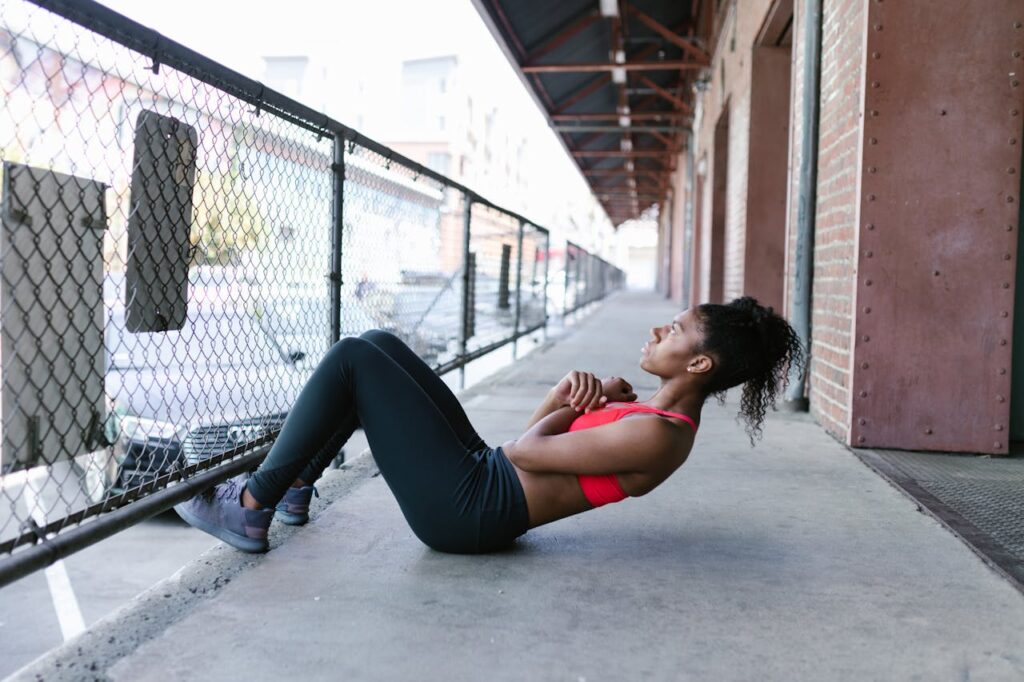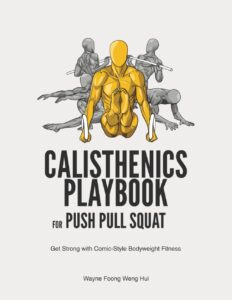Picture this, you’re standing in your living room, park, or even a hotel room halfway across the world. No weights, no machines, no monthly gym fees, just you and the pull of gravity. Yet within minutes, you’re engaged in one of the most effective, challenging, and rewarding forms of exercise known to humanity. Welcome to the world of calisthenics, where your body becomes both the tool and the masterpiece.

The Ancient Art of Bodyweight Mastery
Calisthenics isn’t just another fitness trend—it’s a practice as old as civilization itself. The word derives from the Greek “kallos” (beauty) and “sthenos” (strength), perfectly capturing the essence of this discipline. Ancient Greek warriors used bodyweight exercises to forge the physiques that would carry them through epic battles. Spartans built legendary strength through movements that required nothing more than earth beneath their feet and sky above their heads.
Fast forward to today, and calisthenics has evolved into a sophisticated system of movement that challenges both elite athletes and complete beginners. From the prison yards where inmates developed incredible strength with limited resources, to the modern street workout parks dotting urban landscapes worldwide, calisthenics has proven its timeless effectiveness.
What Exactly Is Calisthenics?
At its core, calisthenics is the art of using your own body weight as resistance to build strength, flexibility, endurance, and coordination. Unlike traditional weightlifting where you add external resistance, calisthenics asks a fundamental question: “How can I move my body through space in increasingly challenging ways?”
This philosophy transforms simple movements into complex, skill-based challenges. A push-up becomes a pathway to a one-arm push-up. A squat evolves into a pistol squat. A hanging position develops into a muscle-up. Each exercise exists on a spectrum of difficulty, allowing for endless progression and refinement.
The beauty lies in the integration. While a bicep curl isolates one muscle group, a pull-up engages your lats, rhomboids, rear delts, biceps, forearms, and core simultaneously. Your body learns to work as a unified system rather than a collection of separate parts.
The Foundation
The Upper Body Powerhouses
Push-ups form the cornerstone of upper body calisthenics. This seemingly simple movement targets your chest, shoulders, triceps, and core while teaching proper body alignment. The variations are endless: diamond push-ups for tricep emphasis, wide-grip for chest focus, decline push-ups for increased difficulty, and eventually progression toward the coveted one-arm push-up.
Pull-ups and chin-ups reign supreme for back and bicep development. These exercises build the kind of functional pulling strength that translates directly to real-world activities like climbing, carrying, and lifting. The progression from assisted pull-ups to weighted versions, and eventually to advanced variations like archer pull-ups or muscle-ups, provides years of challenging development.
Dips complete the pushing pattern, targeting the triceps, chest, and front delts with particular intensity. Whether performed on parallel bars, rings, or even the edge of a chair, dips build the kind of pressing power that creates impressive upper body strength and definition.
Lower Body Foundations
Squats in calisthenics go far beyond the basic bodyweight version most people know. The progression toward single-leg squats (pistol squats) develops unilateral strength, balance, and flexibility that bilateral movements simply cannot match. Jump squats add explosive power, while deep Hindu squats build endurance and mobility.
Lunges create functional lower body strength while challenging stability and coordination. Walking lunges, reverse lunges, lateral lunges, and jumping lunges each target slightly different muscle groups and movement patterns, ensuring comprehensive leg development.
Core Integration
Rather than viewing core training as separate from other movements, calisthenics integrates abdominal and back strength into nearly every exercise. Planks teach static core stability, progressing from basic holds to side planks, plank variations, and eventually to advanced moves like the human flag.
L-sits combine core strength with shoulder stability, creating a challenging isometric hold that builds incredible midsection power. The progression from tucked L-sits to full L-sits and eventually to V-sits provides a clear path of advancement.
The Remarkable Benefits
Functional Strength That Transfers
Unlike machines that lock you into predetermined movement patterns, calisthenics develops strength through natural ranges of motion. When you master a pistol squat, you’re not just building leg strength—you’re developing the balance, flexibility, and coordination needed for countless daily activities. This functional strength transfers seamlessly to sports, work tasks, and life challenges.
Cardiovascular Conditioning Without Cardio
Traditional strength training often requires separate cardiovascular exercise to achieve complete fitness. Calisthenics naturally combines strength and cardio conditioning. A circuit of burpees, mountain climbers, jump squats, and push-ups will elevate your heart rate while building muscle, delivering two benefits simultaneously.
Mental Mastery and Body Awareness
Learning to control your body through increasingly challenging movements develops incredible kinesthetic awareness. You become intimately familiar with your physical capabilities and limitations. This mind-muscle connection extends beyond exercise, improving posture, reducing injury risk, and enhancing overall movement quality in daily life.
The skill-based nature of advanced calisthenics movements provides mental stimulation that simple repetition cannot match. Mastering a muscle-up or handstand requires patience, practice, and problem-solving. Each small progression victory builds confidence and mental resilience.
Economic and Practical Freedom
The financial benefits are undeniable. No gym memberships, no equipment purchases, no commute time. Your living room, local park, or hotel room becomes your gym. This accessibility removes common barriers to exercise consistency, making it easier to maintain long-term fitness habits.
The time efficiency is equally impressive. Without equipment setup or travel time, you can complete an effective workout in 20-30 minutes. This efficiency makes calisthenics ideal for busy professionals, parents, or anyone struggling to find time for fitness.
Progressive Overload Without Plates
Traditional weightlifting achieves progressive overload by adding weight. Calisthenics achieves the same result through leverage, range of motion, stability challenges, and skill progression. A push-up becomes more challenging when performed with feet elevated, on one arm, or on unstable surfaces. This creates virtually unlimited progression potential without ever needing additional equipment.
Joint Health and Longevity
Calisthenics movements typically follow natural joint mechanics, reducing wear and tear compared to some machine-based exercises. The emphasis on flexibility and mobility within strength training helps maintain joint health throughout life. Many calisthenics practitioners report fewer injuries and better long-term joint function compared to their weightlifting counterparts.
The Science Behind the Strength
Research consistently supports the effectiveness of bodyweight training. Studies show that calisthenics can produce strength gains comparable to traditional weightlifting when properly programmed. The multi-planar nature of many calisthenics movements activates stabilizing muscles often neglected in machine-based training.
The hormonal response to challenging bodyweight exercises rivals that of heavy weightlifting. Compound movements like burpees, muscle-ups, and pistol squats trigger significant testosterone and growth hormone release, supporting muscle growth and fat loss.
From a biomechanical perspective, calisthenics develops strength through full ranges of motion, promoting flexibility alongside strength development. This combination is particularly valuable for maintaining mobility as we age.
Getting Started
Assessment and Foundation Building
Begin with honest self-assessment. Can you perform 10 proper push-ups? Hold a plank for 60 seconds? Complete 5 full-range squats? These foundational movements form the building blocks for more advanced skills.
Start with basic progressions and focus intensely on form quality over quantity. A single perfect push-up builds more long-term strength than ten sloppy repetitions. Film yourself or work with experienced practitioners to ensure proper technique from the beginning.
Progression Planning
Create a structured progression plan for each major movement pattern. For push-ups, this might progress from wall push-ups to knee push-ups, full push-ups, decline push-ups, and eventually toward one-arm variations. Document your progress and celebrate small victories along the way.
Consistency Over Intensity
The key to calisthenics success lies in consistent practice rather than sporadic intense sessions. Daily movement, even for just 10-15 minutes, produces better results than occasional hour-long workouts. Your body adapts to regular stimulus, gradually building the strength and skill needed for advanced movements.
The Community and Culture
Calisthenics has fostered a unique global community built on mutual encouragement and knowledge sharing. Local parks worldwide feature informal groups of practitioners helping each other master new skills. Online communities provide support, programming advice, and motivation for practitioners at every level.
This culture emphasizes personal progress over competition. While calisthenics competitions exist, the primary focus remains on individual mastery and improvement. Veterans readily share knowledge with beginners, creating an inclusive environment that welcomes newcomers.
Advanced Horizons
The advanced realm of calisthenics includes movements that seem to defy physics. Human flags, one-arm handstands, planche push-ups, and front levers represent years of dedicated practice. These skills require not just strength, but incredible body control, balance, and mental focus.
Even if you never achieve these elite-level skills, the journey toward them provides endless motivation and development. Each small step forward builds strength, confidence, and body awareness that enhances every aspect of physical life.
Your Body, Your Gym, Your Journey
Calisthenics offers something increasingly rare in our modern world: simplicity combined with unlimited potential. In an age of complex fitness gadgets and overwhelming workout programs, the elegance of bodyweight training stands out. You need nothing more than your body, gravity, and the commitment to consistent practice.
Whether your goal is basic fitness, impressive strength skills, or simply the freedom to exercise anywhere, calisthenics provides a clear path forward. Every push-up brings you closer to a muscle-up. Every squat develops the balance needed for pistol squats. Every plank hold builds toward advanced core skills.
The journey begins with a single movement. Your body is ready. Gravity is waiting. The only question remaining is: are you ready to discover what you’re truly capable of achieving with nothing but yourself and determination?
Hey there! We hope you love our fitness programs and the products we recommend. Just so you know, Symku Blog is reader-supported. When you buy through links on our site, we may earn an affiliate commission at no extra cost to you. It helps us keep the lights on. Thanks.
Disclaimer: The information provided in this discussion is for general informational and educational purposes only. It is not intended as medical or professional advice. Only a qualified health professional can determine what practices are suitable for your individual needs and abilities.


